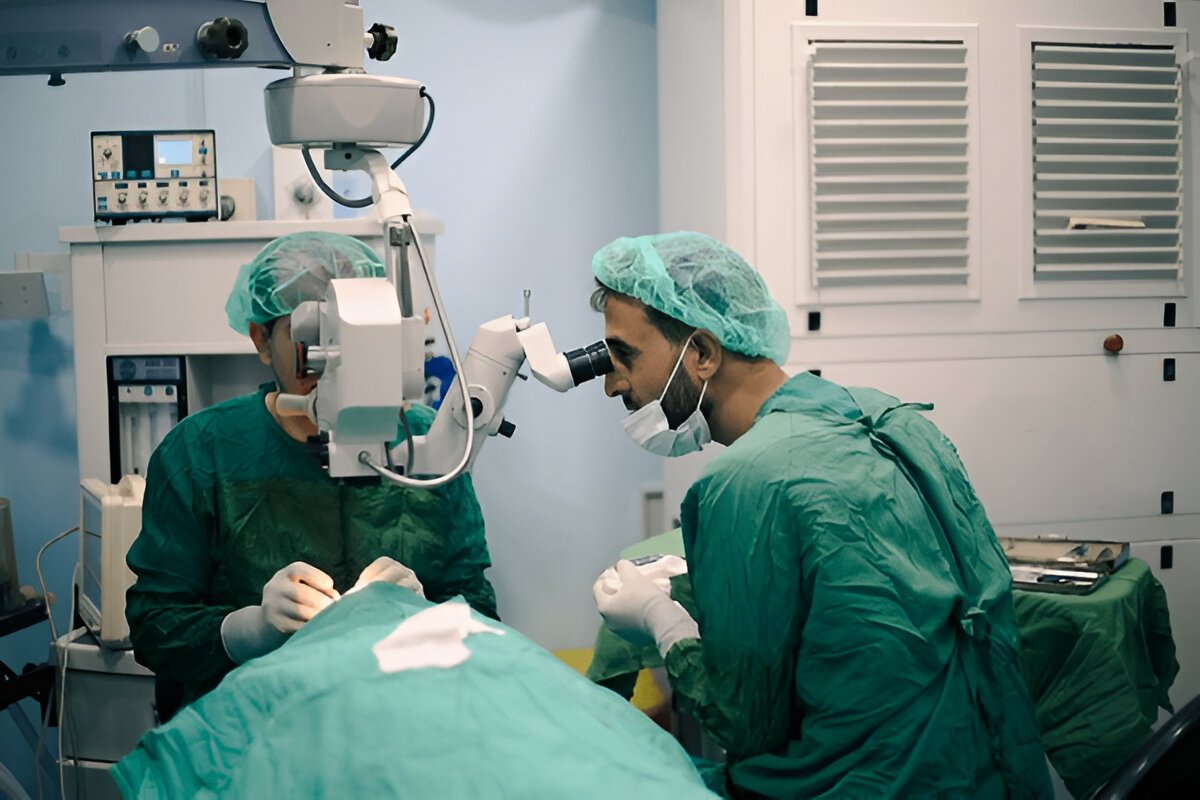Why an Ophthalmic Surgical Microscope Is Essential in Eye Surgery

Eye surgery requires precision and accuracy. The structures of the eye are tiny and delicate. Surgeons need advanced tools to see and work on these structures. One such essential tool is the ophthalmic surgical microscope. This device provides magnified, clear, and stable views of the eye. It is a critical component in modern eye surgeries. In this article, we’ll explore why an ophthalmic surgical microscope is essential in eye surgery.
What Is an Ophthalmic Surgical Microscope?
An ophthalmic surgical microscope is a special type of microscope. It is designed for use during eye surgeries. It provides high magnification, clear visualization, and bright illumination. These features allow surgeons to perform delicate procedures with confidence.
The microscope also includes advanced technologies like 3D imaging and ergonomic designs. These features enhance the surgeon’s ability to operate efficiently and accurately.
Key Features of an Ophthalmic Surgical Microscope
Understanding the key features of an ophthalmic surgical microscope helps explain its importance. Let’s look at the most critical features:
1. High Magnification
The microscope provides multiple levels of magnification. This allows surgeons to see the smallest details of the eye. Adjusting the magnification is easy, ensuring that the surgeon can focus on specific areas during the procedure.
2. Bright Illumination
The microscope uses powerful light sources. These lights provide consistent and bright illumination. This ensures that every part of the eye is clearly visible. Most modern microscopes use LED or halogen lights, which are reliable and long-lasting.
3. Depth Perception
Ophthalmic surgical microscopes offer stereoscopic vision. This creates a three-dimensional view of the surgical area. Depth perception is vital for working on tiny structures, like the cornea, lens, or retina.
4. Ergonomic Design
Surgeons often perform lengthy procedures. Ergonomic designs help reduce strain on the surgeon’s neck and back. Adjustable components ensure the microscope can be positioned comfortably.
5. Advanced Imaging Technology
Some microscopes come with integrated cameras. These cameras capture high-quality images and videos during surgery. The images can be displayed on monitors for better visualization. They are also helpful for teaching, documentation, and patient education.
6. Stability and Precision
A stable microscope is crucial during surgery. Any movement can disrupt the procedure. Modern microscopes come with anti-vibration mechanisms and stable mounts. These features ensure precision and safety.
How an Ophthalmic Surgical Microscope Enhances Eye Surgery
The features of an ophthalmic surgical microscope directly improve surgical outcomes. Here’s how this device enhances eye surgeries:
1. Improves Precision
Eye surgeries require extreme precision. The structures of the eye, like the cornea and retina, are microscopic. The microscope’s high magnification and clear view help surgeons perform precise surgeries.
2. Enables Complex Procedures
A microscope is vital for advanced eye surgeries. These include cataract removal, retinal detachment repair, and corneal transplants. The device allows surgeons to navigate these delicate structures with confidence.
3. Reduces Risks
Better visibility leads to fewer errors. Surgeons can identify and address complications early. This reduces the risk of infections, damage, or incomplete surgeries.
4. Enhances Patient Outcomes
With the help of a surgical microscope, procedures are more effective. Patients experience better results, faster recovery times, and improved vision.
5. Supports Teaching and Training
Integrated cameras allow live streaming or recording of surgeries. These recordings are valuable for training new surgeons and educating patients. They also help in reviewing complex cases.
Types of Eye Surgeries That Require an Ophthalmic Surgical Microscope
The ophthalmic surgical microscope is used in many types of eye surgeries, including:
1. Cataract Surgery
Cataract surgery involves removing the cloudy lens of the eye. The microscope helps in making precise incisions and placing the artificial lens correctly.
2. Retinal Surgeries
Retinal surgeries, like repairing a detached retina, are highly delicate. The microscope provides the magnification needed to handle the retina’s thin layers.
3. Corneal Transplants
Corneal transplants involve replacing damaged corneal tissue with donor tissue. The microscope ensures precise suturing and alignment of the new tissue.
4. Glaucoma Surgery
In glaucoma surgery, doctors create small openings to relieve pressure in the eye. The microscope helps in performing these procedures accurately.
5. LASIK and Refractive Surgeries
Refractive surgeries reshape the cornea to correct vision. A surgical microscope ensures that the reshaping is done evenly and precisely.
Advantages of Using an Ophthalmic Surgical Microscope
Here are the main advantages of using an ophthalmic surgical microscope:
- Enhanced Visualization: Provides clear and detailed views of the eye.
- Improved Safety: Reduces risks by offering better control.
- Higher Efficiency: Speeds up procedures without compromising accuracy.
- Versatility: Suitable for a wide range of surgeries.
- Better Training: Allows recording and sharing of surgical techniques.
Choosing the Right Ophthalmic Surgical Microscope
When selecting a surgical microscope, consider the following factors:
- Optical Quality: Look for high-resolution lenses and adjustable magnification.
- Lighting System: Choose a microscope with reliable and bright illumination.
- Stability: Ensure the device has anti-vibration features.
- Imaging Technology: Consider models with integrated cameras for recording.
- Ergonomics: Pick a design that supports long procedures comfortably.
- Brand and Warranty: Invest in a reputable brand with good customer support.
Conclusion
The ophthalmic surgical microscope is a game-changing tool in eye surgery. Its advanced features make it indispensable for ophthalmologists. They include high magnification, bright illumination, and 3D visualization. The device improves surgery precision and patient outcomes.
This microscope supports many procedures, from cataract removal to retinal repairs. It reduces risks, ensures faster recovery, and helps surgeons achieve the best results. Every ophthalmologist should buy a top surgical microscope. It is vital for exceptional patient care.








